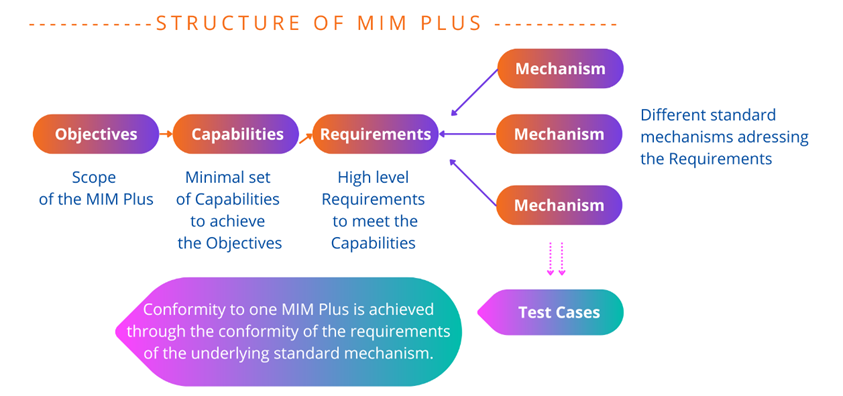
The Interoperability Test Bed (ITB) will be used for the conformance testing and certification of solution providers, in support of European Smart Communities and the Local Digital Twins (LDT) Toolbox.

The Local Digital Twins (LDT) Toolbox is a European initiative to accelerate European communities’ digitalisation efforts, as part of their transformation to Smart Communities. The EU LDT Toolbox Project aims to create local digital twins for smart cities, leveraging advanced technologies such as IoT, AI, and data analytics. These digital twins serve as virtual replicas of real-world cities, enabling better urban planning, resource optimisation, and decision-making.
A key focus of the project is interoperability, which despite its essential nature continues to be a key challenge for communities in the implementation of their digitalisation initiatives. One of the main goals is to support the ecosystem with the ability to test for conformance against the interoperability framework defined by the MIMs Plus. The MIMs Plus, or Minimum Interoperability Mechanisms Plus, are a set of requirements to establish an interoperability baseline, developed by Open & Agile Smart Cities (OASC) and validated by the Living-in.EU initiative that brings together European cities, regions and Member States for the promotion of digital transformation. By enabling MIMs Plus conformance testing, existing and future solutions can be tested and certified, both by the cities using them as well as by solution providers, resulting in an interoperable ecosystem of digital building blocks.
The project is part of the Digital Europe Programme and is driven by the European AI office under the European Commission’s Directorate-General for Communications Networks, Content and Technology (DG CONNECT). The project is realised through the collaboration of several partners, with the conformance testing track in particular involving Public Administrations (Digital Vlaanderen), International Organisations (OASC), Industry (Nunsys, Libelium, Deloitte, Kereval, IMEC, Intellera Consulting, TNO) and Academic Institutions (Technical University of Denmark).
Conformance testing approach
Each version of the MIMs Plus is based upon well-known standards defining objectives, capabilities and requirements. To enable MIMs conformance testing, a first mapping exercise takes place against the requirements of their underlying standards, to identify those that can be practically tested. With this mapping in place, MIMs Plus conformance testing translates to a series of tests against the mapped requirements, resulting in test plans with specific conditions, inputs and expectations. These test plans can then be expressed as executable test cases.

The solution selected for MIMs Plus conformance testing is the Interoperability Test Bed. Its open-source nature makes it an ideal choice to provide transparency and to foster collaboration between the different parties involved in the testing process. From a technical perspective, its extensible architecture figures as a particular strong point, as it allows the use of custom extensions and integration of existing solutions to cover the various MIMs Plus requirements being tested. Finally, its user friendliness ensures easy and intuitive use even by those with limited technical experience.
To realise the conformance test scenarios, the MIMs Plus test plans are first expressed as GITB TDL test cases that can be processed by the Test Bed. Upon execution, these test cases leverage the Test Bed’s built-in capabilities, with the addition of an internal JSON validator to cover data validation needs. Besides recording test results, the Test Bed then also provides detailed test reports and technical logs to allow troubleshooting in case of failures.

Milestones and next steps
The conformance testing solution is expected to be made available to communities and solution providers by mid-2025. This first release will cover the more mature MIMs Plus, notably the MIM Plus 1 (Context Information Management), MIM Plus 2 (Data Models), and MIM Plus 7 (Spaces). The goal is to progressively achieve full conformance test coverage as the maturity of the MIM Plus framework evolves. This testing work will also be integrated into a MIM Plus certification scheme, which is currently being developed by the consortium. The goal of this certification initiative is to provide an even higher level of confidence for cities, communities, and regions when procuring interoperable solutions.
Before its official launch you will be able to explore the new testing platform at the upcoming Smart City Expo, which will be held between the 5th and 7th of November in Barcelona, at the European Commission's booth. Current planning foresees also a live demo of the platform, allowing you to already test a system for conformity to MIMs Plus 1.
Find out more
The best source to find out more about the LDT Toolbox and the transition to Smart Communities is the Living-In.eu portal. For the more technically minded, you can also view and download here the latest versions of the MIMs Plus. Regarding the Test Bed itself, general details on its services and other use cases can be found in its Joinup space, with its value proposition being a good starting point for newcomers. To receive updates on Test Bed news and releases remember to subscribe to the Test Bed on Joinup, and to follow Interoperable Europe’s updates on X and LinkedIn.
The Interoperability Test Bed is a service provided by the European Commission’s DIGIT, offering conformance testing and validation solutions in support of IT systems’ cross-border interoperability.
Referenced solution


